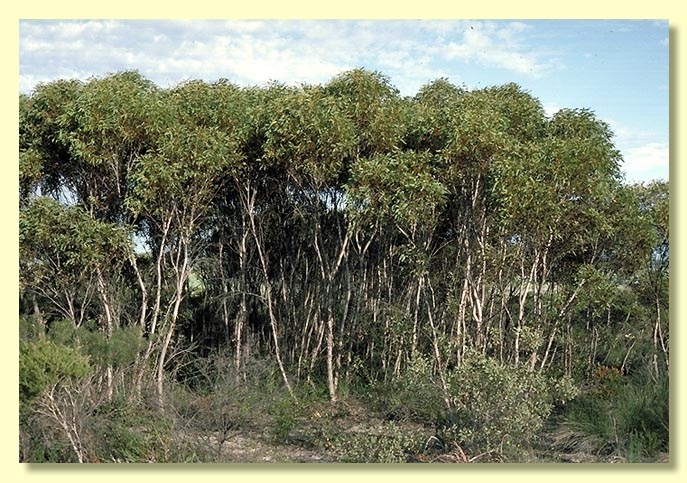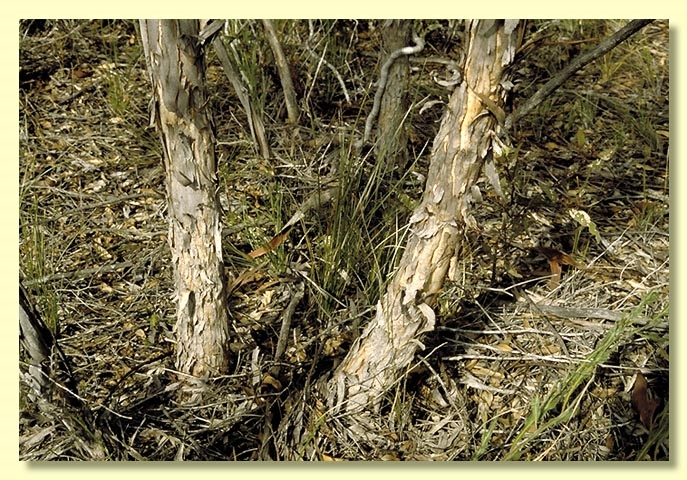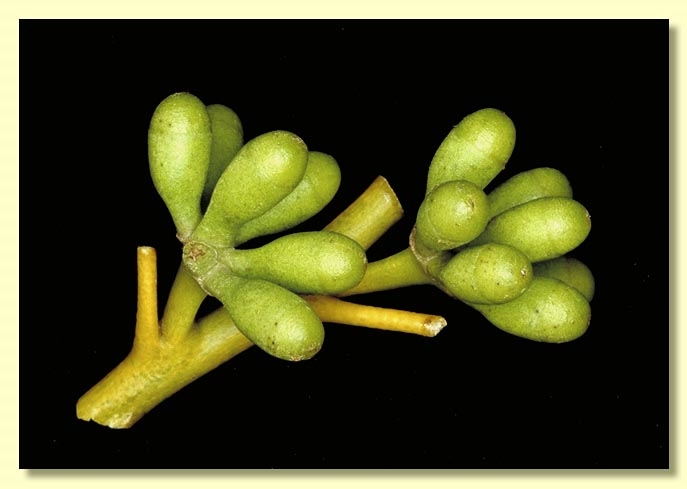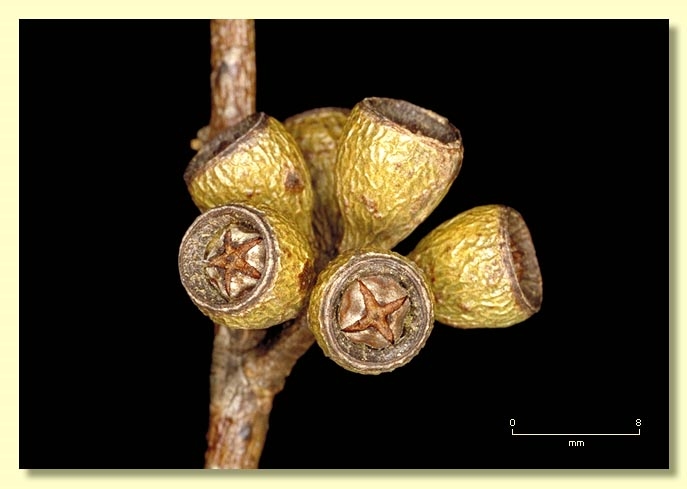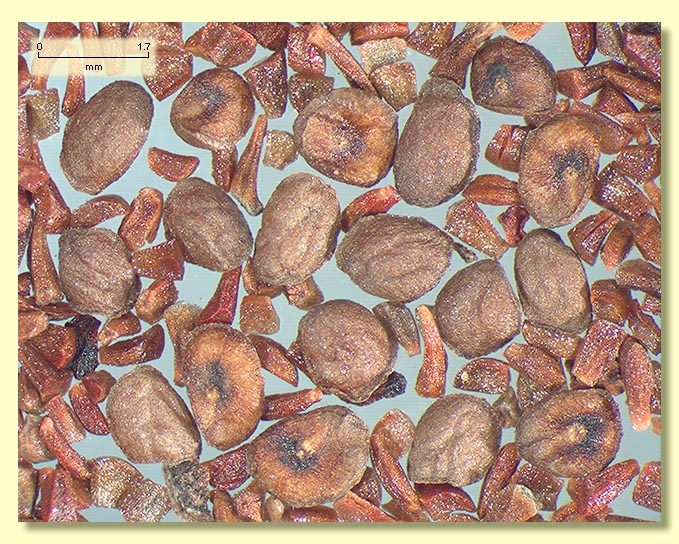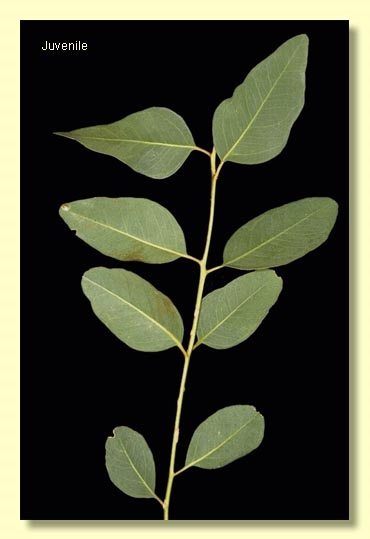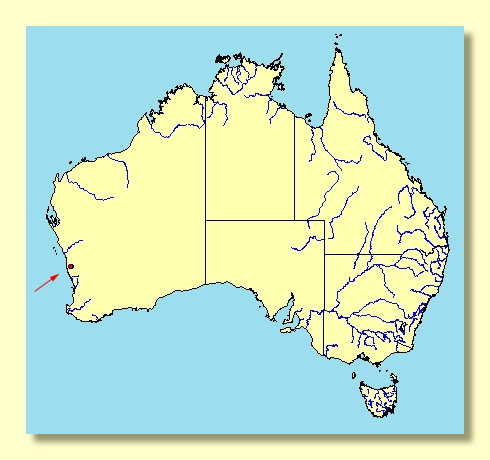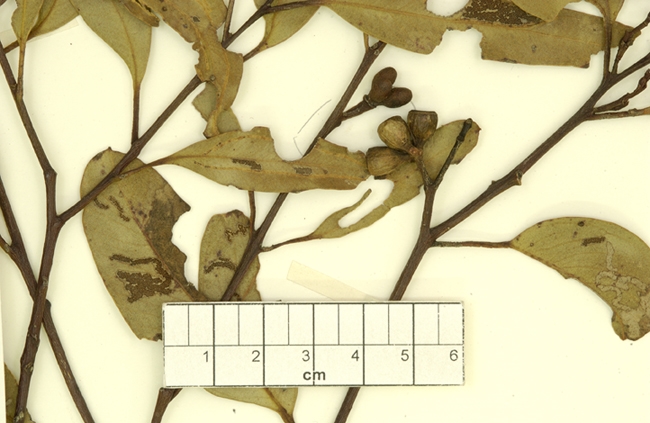Euclid - Online edition
Eucalyptus leprophloia
Eucalyptus | Symphyomyrtus | Bisectae | Glandulosae | Accedentes
Bark rough, fibrous, loose, grey-brown, for ca 1 m of trunks, becoming curly and flaky then smooth whitish grey to pale orange or pinkish grey.
Branchlets with oil glands in the pith.
Juvenile growth (coppice or field seedlings to 50 cm):stems rounded in cross-section; leaves always petiolate, alternate, elliptical to ovate, 5–8.5 cm long, 2.5–4 cm wide, dull, green.
Adult leaves alternate, petioles 1–2 cm long; blade lanceolate, 7–10.5 cm long, 1.5–3 cm wide, base tapering to petiole, margin entire, apex pointed, concolorous, glossy, green, side-veins at an acute or wider angle to midrib, reticulation dense, intramarginal vein remote from margin, oil glands intersectional.
Inflorescence axillary unbranched, peduncles flattened, widening apically, 0.3–1 cm long, buds 7, 9 or 11 per umbel, pedicellate (pedicels 0.3 cm long). Mature buds obovoid to ovoid (0.7–0.9 cm long, 0.5 cm wide), scar present, operculum rounded, stamens inflexed, anthers oblong, versatile, dorsifixed, dehiscing by longitudinal slits, style long and straight, stigma blunt, locules (3)4, the placentae each with 4 vertical rows of ovules. Flowers white.
Fruit pedicellate (pedicels 0.2–0.3 cm long), cupular to barrel-shaped, 0.5–0.6 cm long, 0.6–0.7 cm wide, disc descending, valves (3)4, near rim level.
Seeds brown, 1–2.5 mm long, flattened-ovoid, dorsal surface shallowly reticulate, a narrow encircling marginal flange often present, hilum ventral.
Cultivated seedlings (measured at node 10): cotyledons Y-shaped (bisected); stems square to rounded in cross-section; leaves always petiolate, opposite for 4 to 6 nodes then alternate, deltoid or broadly ovate, 3.5–8 cm long, 3–6.5 cm wide, green, dull at lower nodes but soon becoming glossy.
Flowering time unknown.
An erect mallee endemic to Western Australia, known only from a single stand on Hi-Vallee farm east of Jurien, in a shallow loamy gully between breakaways. Two smaller populations are also known between Mingenew and Jurien. The basal bark is loosely rough and flaky and the adult leaves are glossy green.
Eucalyptus leprophloia belongs to Eucalyptus subgenus Symphyomyrtus section Bisectae subsection Glandulosae because the cotyledons are bisected, buds have an operculum scar and the branchlets have oil glands in the pith. Within this subsection E. leprophloia belongs to a small subgroup of eight species, series Accedentes, further characterised by having buds with inflexed stamens, ovules in four rows and juvenile leaves petiolate. The species are E. accedens, E. laeliae, E. leprophloia, E. trivalva, E. pruiniramis, E. zopherophloia, E. prominens and E. pilbarensis.
The restricted distribution, habit, bark and crown leaves separate this species from its relatives in subcoastal areas north of Perth. E. zopherophloia has a more coastal distribution on limy soils, tighter more extensive rough bark and dull to slightly glossy adult leaves. E. pruiniramis occurs a little further inland on more gravelly soils and has dull grey-green adult leaves, glaucous branchlets and slightly larger fruits. E. prominens occurs on coastal limestone north from Kalbarri, is mostly smooth-barked, has glossy green leaves and larger fruit with exserted valves. E. accedens is a widespread powder-barked tree on lateritic breakaways and has dull blue-green leaves.
Eucalyptus leprophloia is listed as "Endangered" under the Australian Government Environment Protection and Biodiversity Conservation Act 1999 (EPBC Act). Further information may be found at this web address:
http://www.environment.gov.au/cgi-bin/sprat/public/sprat.pl

